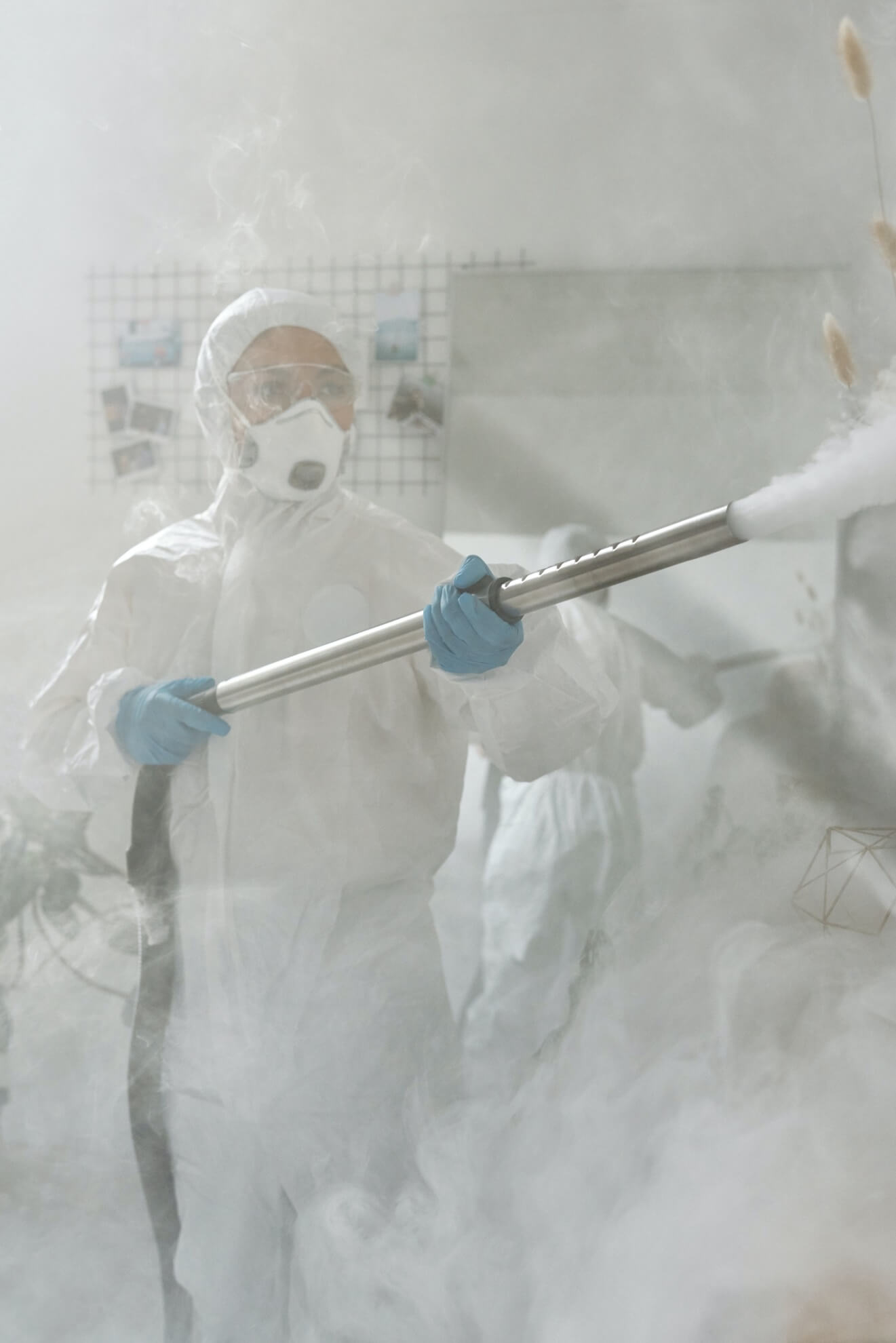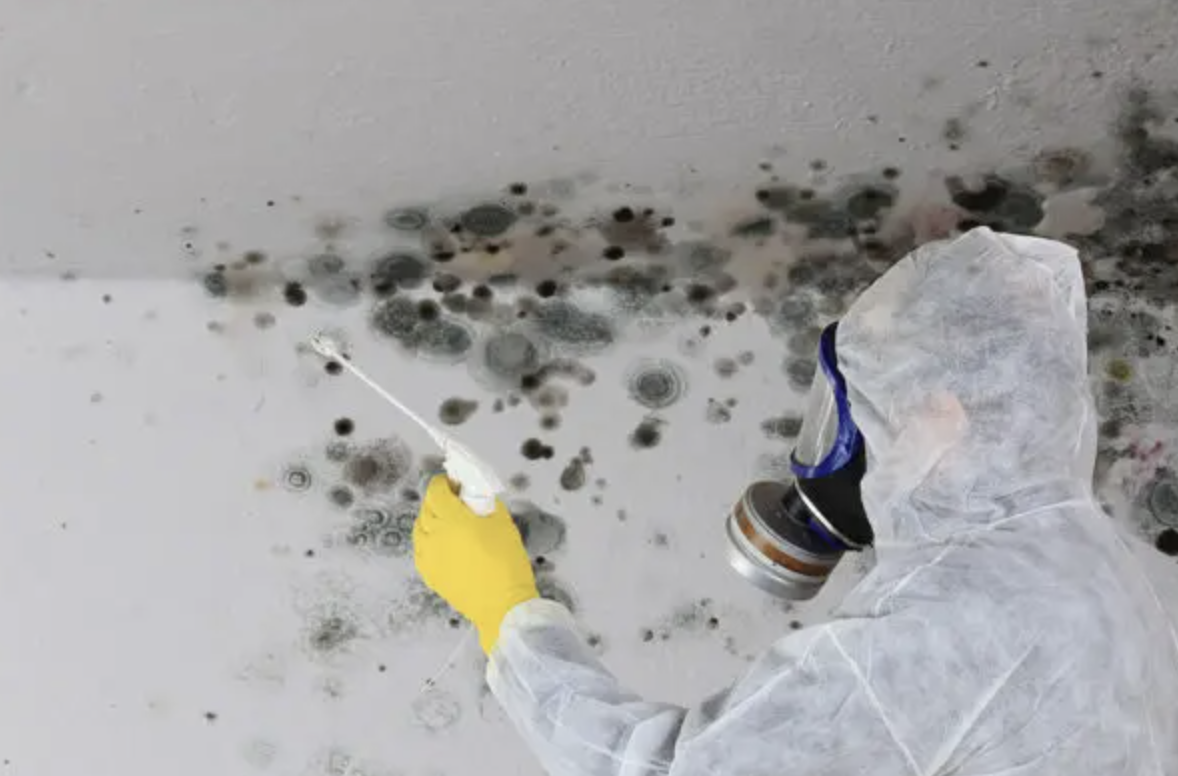Article by Joshua Kent
Moisture Master Pros OwnerThe problem with mold growth isn’t just the bad aesthetics but also the risk of damage to valuables and serious health problems. A small spec of mold popping up from minor water damages such as a leaky faucet can quickly grow and spread around your house, defacing your property, degrading the surfaces it grows on (from wooden flooring to clothing), and contaminating the air inside the house.
Depending on the level of growth factors in place, it could take just a few days to a few weeks to go from a small patch of mold to an all-consuming mold infestation. If the clean up isn’t timely and effective, mold contamination can quickly return bigger and stronger right after you’ve removed it, spreading from the basement, behind walls and other hidden places, out to the rooms upstairs and other parts of the home.
Mold remediation is a holistic mold solution that not only eliminates mold at the moment but also forestalls any future growth by inhibiting growth factors.
In this guide, we’ll show you all that you need to know about mold remediation – the processes involved, how long it takes, and the results to expect.
What is Mold Remediation?
Mold growth is usually a symptom of an underlying moisture problem in your home. Water is entering your home where it isn’t supposed to, or your home is not properly protected from environmental factors that promote mold growth, such as high humidity. Once water damage or other growth factors have occurred, mold can take root within 24–48 hours. It can then expand a few square inches each day, covering more space within days.
Mold remediation is the process of removing, cleaning, and disinfecting mold-contaminated surfaces in a home. It requires special tools and techniques to map out the mold colonies accurately and remove them completely.
Now, does mold remediation and mold removal mean the same thing? Mold remediation does entail removing mold, but it goes much farther than mold removal, and it’s very important to note the difference in order to build the right expectations for your remediation service.
Mold remediation doesn’t just focus on eliminating mold spores and cleaning out the area, it also takes on the root cause of the mold growth to prevent it from returning. It begins with a thorough inspection of your home to find not just the mold spores but the source of the moisture enabling them. The source is then plugged, the mold thoroughly removed with high-grade mold-killing materials, and the home is disinfected to inhibit further growth.
Mold remediation services will also help improve environmental conditions around your home to forestall any future growth of mold spores, ensuring the relative humidity in your home falls between the ideal range of 30% to 50%.
How Long Does it Take to Repair Mold?
The duration of the mold remediation process depends on multiple factors. For starters, it’ll take longer the more serious the water damage is – a leaky pipe behind a wall will take longer to fix than pipe leaks on the surface. Also, the size and area of contamination can also determine the efforts needed, and thus, the time it’ll take for the remediation.
Your remediation service will take all these factors into account while planning and preparing for your job. It usually takes between a day to week to implement a remediation plan from start to finish. Your remediation service will be more precise with the time estimates to make it more convenient to arrange for your accommodation.
Here’s a breakdown of the factors that determine the duration of remediation plans:
Location of the mold
Mold in hard-to-reach places like the attic, ceiling, nooks, and crannies are harder to remove, hence they might take longer. If it grows behind a surface, your walls and flooring will most probably have to be ripped out, and that could eat up more time.
Type of surface
It’s easier to clean mold on flat, concrete surfaces compared to wooden surfaces or other less solid surfaces. Also, nonporous surfaces like concrete require a different cleaning method than porous surfaces like a rug.
Size of contamination
Mold colonies spanning more than 10 square feet are a serious threat to health. Anything near this level should be left to well-trained experts with the right tools. The larger the size of the mold contamination, the greater the time and effort needed to eliminate it. Ten to 30 square feet of contamination takes just one or two days. If it’s 100 square feet or larger, it’ll take no less than 3–5 days.
Type of mold
Black mold is the most common type of mold found in American homes, and it’s also one of the most dangerous mold species. Dangerous mold strains like black mold requires more care and expertise.
What Happens in Mold Remediation?
Mold remediation is a thorough-going process that requires control at the granular level. Several factors are taken into consideration to craft and implement a clinically tailored plan.
Here’s a breakdown of all the different stages typically involved in the mold remediation process:
Preparation
- Wrapped from top down in Personal Protective Equipment (PPE), the remediation service experts inspect the home thoroughly with special tools and techniques to probe water damages and mold spores. Moisture Master Pros LLC deploys rare, state-of-the art equipment like infrared detectors and drones to improve their search accuracy.
- The contaminated areas are cordoned off – windows and doors closed and other openings sealed with polyethylene sheeting and lined with duct tape.
- The contaminated areas are misted to minimize airborne toxins.
- Professional technicians and plumbers are called to fix the water leakage.
- The site is set up for the remediation work with hoses, pipes, and other equipment.
- Removable items that have been contaminated are taken out for cleaning and possible repairs, while mold-damaged materials are carefully disposed of in plastic bags, and all affected surfaces are decontaminated.

Clean Up
- Unmovable surfaces are scrubbed and wiped with a damp sponge, cloth, or paper towel that’s soaked in a detergent solution.
- The contaminated area is deep vacuumed using a HEPA-equipped vacuum.
- Deep-cleaning porous surfaces like wood are cleaned to remove hard-sticking mold.
Disinfection
- All affected areas are sprayed with an EPA-approved biocide to remove any lingering mold.
- Encapsulation work (the use of special treatments on the affected area) remove any hardened remnant of mold.
- Deodorizers are used to remove any odor.
Drying
- The area is sealed off for 24–48 hours to allow the chemicals to fully take effect and for all moisture and wet surfaces to dry completely.
- Fans and dehumidifiers may be used to dry the area more quickly.
- Decontaminated items that were removed are repaired and brought back or replaced.
Finishing Touches
- The remediation experts will perform one last round of checks to probe for any remaining mold spores.
- Our experts also ensure that environmental factors like humidity levels are at acceptable levels.
Can you Live in a House During Mold Remediation?
Low-Level Remediation Work
High-Level Mold Problem
Beyond 30 square feet, the mold colony poses significant health risks. At 100 feet, it becomes extremely dangerous with serious health risks, and immediate evacuation of your entire household is required.
Mold presence in your HVAC is even more dangerous and requires professional mold removal. The air in the HVAC is heavily contaminated and large mold colonies can stick in difficult-to-reach places. It usually takes a few days longer to complete remediation work involving HVAC.
Can Mold Come Back after Remediation?
It’s always ill-advised to DIY mold removal – especially if it spans a few square feet. Besides the likelihood of not removing it completely, there’s also the risk of spreading it to unaffected areas. Mold can return in as little as 48 hours after a poor mold removal job, depending on the prevailing environmental factors. Professional mold remediation takes a clinical approach, tackling the root cause of the problem before taking out every spec of mold with special equipment.
They’ll also recommend precautionary steps to forestall any possible future growth, such as:
- Finding and fixing all pipe leakages
- Venting the home adequately and using dehumidifiers
- Probing and eliminating any signs of water damage immediately after a storm
- Checking up on previous leakage sites, especially after a rainstorm
- Implementing basement waterproofing to guard against mold-encouraging underground water
Keep mold at bay in your home by acting quickly once you notice anything. This helps prevent further contamination, damage, and health risks. Early intervention also reduces the amount of remediation work required, hence the process will be quicker and easier on you.
At Moisture Masters Pros, we use state-of-the-art tools and equipment to bring a speedy end to your mold problems. We’re guided by EPA guidelines, but we go beyond industry standards to rid your home of dangerous mold completely and forestall the possibility of future occurrences.
Let’s work together to bring a quick end to your mold problems. Book your free mold inspection today.



